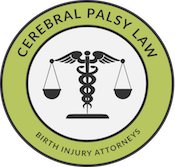What Is Preeclampsia?
Preeclampsia, or pregnancy-induced high blood pressure, is characterized by high blood pressure and excess protein in the urine after 20 weeks of pregnancy. Left untreated, preeclampsia can result in health issues in both the mother and child—the mother may experience renal failure, blood clots, and central nervous system disorders, and the unborn child may suffer injuries from placental abruption, diminished placental blood flow, hypoxic ischemic encephalopathy, cerebral palsy, and premature delivery.
If you believe your loved one’s injury or disability resulted from preeclampsia, we encourage you to reach out to our Michigan birth injury lawyers. During your free case evaluation, our legal and medical team will determine if you have grounds for a medical malpractice or personal injury claim. Should we take your case, our no-fee policy ensures you will not be charged until we win or settle in your favor. Michigan Cerebral Palsy Attorneys is available to speak with you 24/7—contact our team in one of the following ways:
Call us toll-free at (888) 592-1857
Press the Live Chat tab to the left of your screen
Fill out our online contact form here
What Causes Preeclampsia?
While the cause of preeclampsia is still unknown, researchers speculate that possible causes include insufficient blood flow to the uterus or damaged blood cells, immune system issues, poor diet and body fat, or genetic predisposition to the condition. Physicians know more about the risk factors of preeclampsia than the causes, which we’ve listed below.
What Are the Risk Factors for Preeclampsia?
The following conditions may increase the risk of developing preeclampsia:
- First-time pregnancies (nulliparity), pregnancies with new partners, or pregnancies after a long interval. 2.6% of healthy, first time mothers develop preeclampsia.
- Past history of preeclampsia increases the risk of preeclampsia sevenfold in a subsequent pregnancy.
- Family history of preeclampsia
- Women older than 35 or younger than 20 years of age
- Women with the following conditions before pregnancy:
- Chronic high blood pressure (hypertension)
- Kidney disease
- Migraines
- Diabetes
- Rheumatoid arthritis
- Lupus
- Obese women or women with a body mass index (BMI) over 30
- Women with vitamin D deficiency
- Multiple gestation: Pregnancies with multiple gestations (twins, triplets, etc.) triples the risk of developing preeclampsia.
What Are the Complications Associated with Preeclampsia?

- Lack of blood flow to the placenta: Preeclampsia constricts blood vessels, ultimately limiting the passage of oxygen and nutrients to the baby. This may result in slow growth, low birth weight, and breathing difficulties. Furthermore, preeclampsia is the leading cause of preterm birth, which may lead to cerebral palsy, learning disabilities, seizures, and hearing or visual problems.
- Placental abruption: Placental abruption causes the placenta to separate from the uterus wall before delivery, endangering both mother and child.
- HELLP syndrome: HELLP, or hemolysis, is characterized by the destruction of red blood cells, elevated liver enzymes, and low platelet (the blood cells that stop bleeding) count.
- Eclampsia: The end result of untreated preeclampsia, eclampsia can cause chronic seizures, damage to vital organs, coma, brain damage, and death of the mother and baby.
- Cardiovascular disease: Preeclampsia increases risk of future heart disease.
What Are the Signs and Symptoms of Preeclampsia?
- Swelling (edema) in the hands and face caused by the buildup of fluids
- Rapid weight gain from an increase in bodily fluids
- Abdominal pain, particularly in the right side
- Severe and/or persistent headaches
- Change in reflexes
- Reduced urine output
- Dizziness
- Vomiting and nausea
- Blurry, flashing, or fuzzy vision
- Altered mental status
- Extreme hypertension
How Is Preeclampsia Diagnosed?
Preeclampsia is diagnosed during routine blood pressure checkups and urine tests at prenatal appointments. If pregnancy-induced preeclampsia is detected, a physician will generally test the mother’s kidneys and protein levels and conduct tests to determine the baby is receiving enough oxygen and nourishment.
How Is Preeclampsia Managed?
There is no simple treatment for preeclampsia and the condition will continue until the baby is born. Many physicians induce labor early or deliver via C-section if the baby is past 34 gestational weeks.
Patients with mild and early preeclampsia should take the following steps:
- Rest on the left side of the body in order to take weight off the baby’s major blood vessels
- Consume less salt
- Drink at least eight glasses of water daily
- Introduce more protein into the mother’s diet
Legal Help for Cerebral Palsy and Birth Injuries from Preeclampsia
When a loved one is affected by cerebral palsy or another birth complication, parents or guardians have to meet expensive medical bills, confront time consuming rehabilitation procedures, and handle great emotional burdens. Unfortunately, birth complications from maternal health conditions like preeclampsia are often the result of negligence on the part of a medical professional.
For reference, the following instances are considered medical negligence:
- Physicians fails to frequently evaluate for worsening preeclampsia
- Patients with newly-onset preeclampsia are not hospitalized
- The physician did not take the serial examinations recommended for preeclamptic hospitalized patients and their babies. For instance, some recommended serial examinations include blood pressure tests (four daily) and liver function tests for the mother, and fetal movement recordings and biweekly nonstress tests for the fetus.
- Delivery was not initiated at 34 weeks for women with severe preeclampsia
- Failure to follow standards for preterm late delivery and deliver at the gestational age safest to both mother and child (which, according to current ACOG research, occurs between 36-39 gestational weeks based on severity and control)
- The mother was not properly informed about the condition and alternative delivery options.
Whether your child’s cerebral palsy was the result of preeclampsia or from another labor and delivery complication, a lawyer from Michigan Cerebral Palsy Attorneys can help you obtain the compensation you deserve. Call (888) 592-1857 or fill out this online contact form and our cerebral palsy and birth injury attorneys will evaluate your case for free.
Sources
- August, Phyllis, MD, MPH, and Baha M. Sibai, MD. “Preeclampsia: Clinical Features and Diagnosis.” Preeclampsia: Clinical Features and Diagnosis. Ed. Charles J. Lockwood and Vanessa A. Barss. UpToDate, n.d. Web. 16 Sept. 2014.
- Parker Morgan Literature Quotes:
Hammond, Charles B., and Philip J. Disaia. “Table 22-6. Serial Examinations Recommended for Preeclamptic Hospitalized Patients.” Danforth’s Obstetrics and Gynecology. By James R. Scott. 7th ed. N.p.: Lippincott Williams & Wilkins, n.d. 361. Print.
